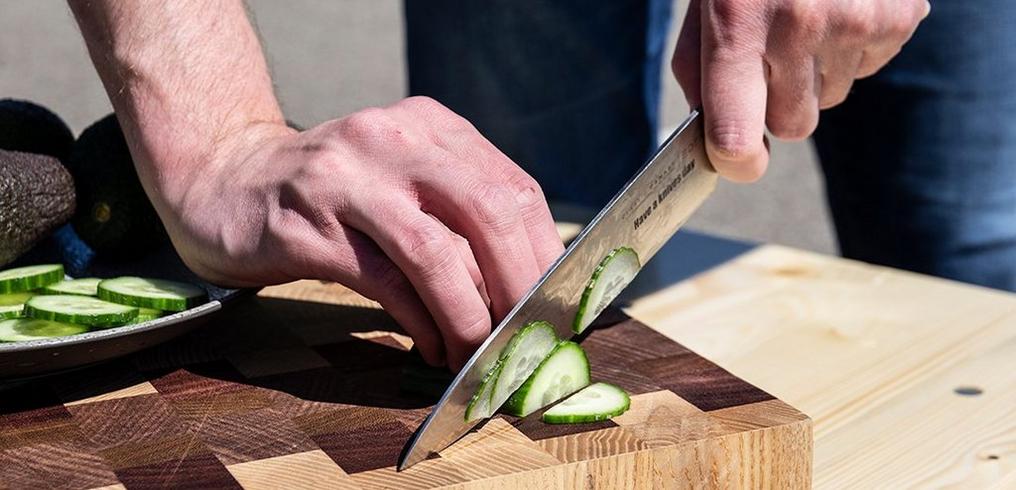When it comes to crafting culinary masterpieces, the choice of tools can make all the difference. For kitchen professionals, understanding the intricate details of a German chef knife's dimensions is crucial. These knives are revered for their precision, balance, and durability, making them indispensable in any chef's arsenal. In this guide, we'll delve deep into the world of German chef knives, exploring their dimensions and why they matter.

The Importance of Knife Dimensions
The dimensions of a chef knife are not just about length and width. They encompass the blade's thickness, the handle's size, and the overall balance of the knife. A well-proportioned knife can enhance performance, reduce fatigue, and increase safety. For professionals who spend hours in the kitchen, these factors are not just preferences but necessities.
Understanding the Standard Dimensions
German chef knives typically range from 6 to 12 inches in length, with 8 inches being the most common choice. The blade's width is generally between 1.5 to 2 inches, providing ample surface area for chopping and slicing. The thickness of the blade is another critical factor, usually around 2 to 4 millimeters, ensuring the knife is both sturdy and agile.
The Role of Blade Length
The length of a German chef knife's blade determines its versatility. An 8-inch blade is perfect for most tasks, such as chopping vegetables, slicing meat, and dicing herbs. However, for larger tasks or more precise cuts, a longer blade, such as a 10 or 12-inch, might be more suitable. For those interested in the specifics of German knives, consider exploring more about the differences between German and Santoku knives.
Handle Dimensions and Ergonomics
The handle is often overlooked, but its dimensions are just as vital. A comfortable grip can prevent hand strain and improve precision. German chef knives generally feature a handle length between 4 to 6 inches, designed to fit comfortably in the hand while providing excellent control. The balance between the blade and handle is a hallmark of German craftsmanship, as detailed in this exploration of Solingen's knife-making legacy.
Factors Affecting Knife Performance
Several factors influence how a chef knife performs, beyond just the dimensions. The blade's material, the handle's composition, and the overall design all play pivotal roles. German knives are typically made from high-carbon stainless steel, offering a perfect blend of sharpness and corrosion resistance. This combination ensures longevity and minimal maintenance.
Blade Thickness and Edge Retention
The thickness of the blade affects its cutting ability and durability. A thicker blade is more robust and can withstand heavy use, while a thinner blade allows for more precise cuts. German chef knives strike a balance, offering a thickness that supports both durability and precision. For more insights into the robustness of German knives, check out why German knives are considered heavy-duty.
Handle Material and Grip
The material of the handle impacts the knife's feel and grip. German chef knives often feature handles made from wood, plastic, or composite materials. Each material offers unique advantages, from the warmth and classic feel of wood to the durability and moisture resistance of composites. The choice ultimately depends on personal preference and the specific tasks at hand.
Choosing the Right Dimensions for Your Needs
Selecting the ideal dimensions for a German chef knife depends on the tasks you perform most frequently. For general use, an 8-inch blade with a balanced handle offers versatility and ease of use. However, for specialized tasks, you might consider different dimensions. For instance, a longer blade might be preferable for slicing large cuts of meat, while a shorter blade can offer more control for intricate work.
To explore various options and find a set that suits your needs, visit the best German knife sets available under a specific budget.
Maintaining Your German Chef Knife
Proper maintenance is key to preserving the dimensions and functionality of your knife. Regular honing and sharpening ensure the blade remains effective, while proper cleaning extends its lifespan. For detailed care instructions, refer to these knife care tips.

FAQs
What is the ideal length for a German chef knife?
The most common size is 8 inches, providing a balance of versatility and control. Longer blades, such as 10 or 12 inches, are suitable for larger tasks.
How does blade thickness affect performance?
Blade thickness impacts cutting ability and durability. A thicker blade is more robust, while a thinner blade allows for more precise cuts.
What materials are best for knife handles?
Knife handles are made from wood, plastic, or composites. Each offers unique advantages in terms of grip, comfort, and durability, depending on personal preference.


























